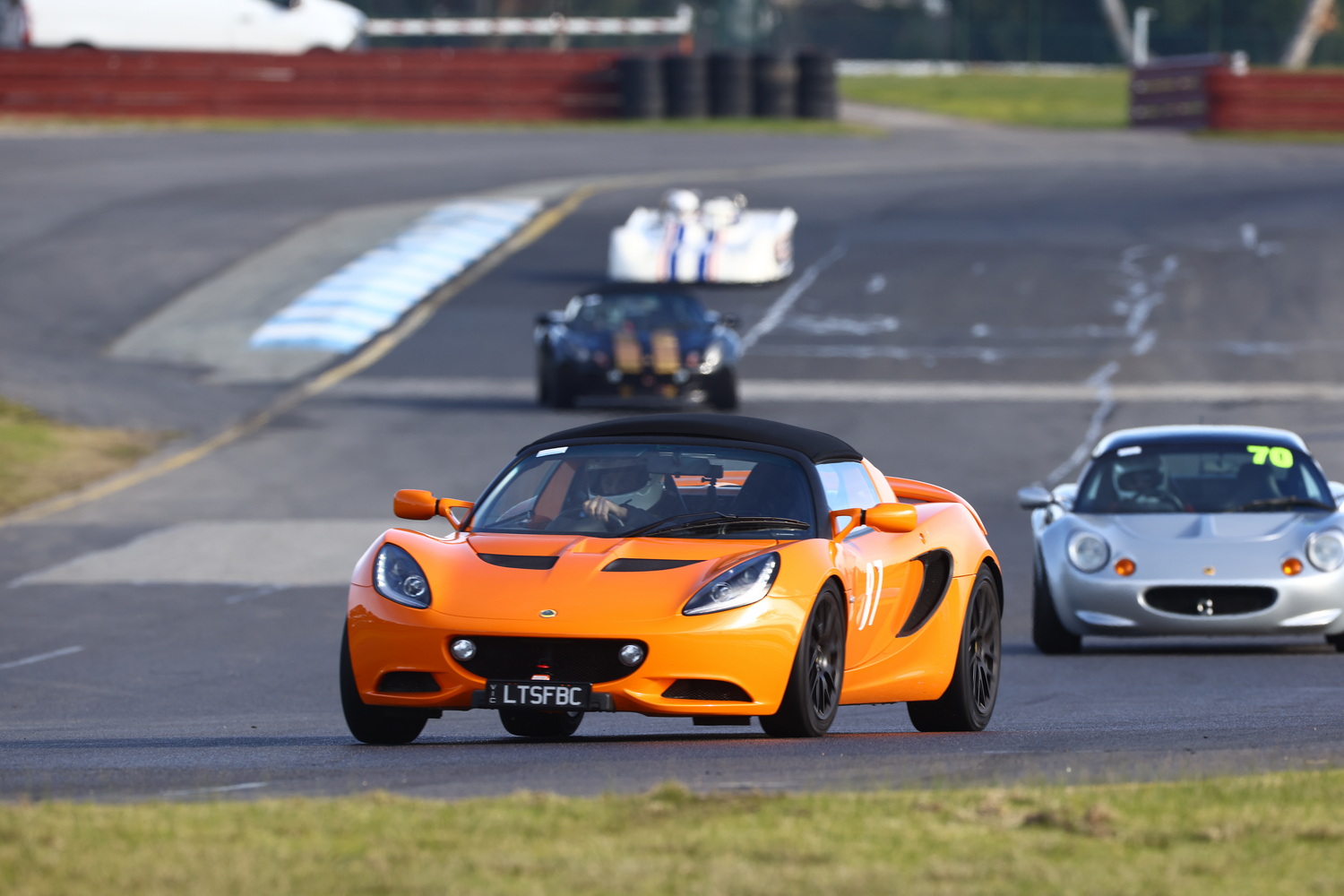
How to share the track on a trackday
There are many resources in life that we must share. So it’s best for all, safest and most efficient, if we all cooperate. And that’s definitely true of track driving.
Unfortuantely, there is often some selfish behaviour by some drivers. And in fairness, new drivers may not understand how to share.
There’s also a bit of ego – it can be fun to catch and pass people, but conversely, some fragile egos can be damaged if they are caught and passed. But as you were almost certainly told in the briefing, “this isn’t a race”.
You can also think about the skill factor. A safe, minimal-time-loss pass takes real skill on behalf of the car being passed as well as the car doing the passing. Learn the skill of allowing faster cars past with minimal laptime impact to you or them, and be proud of that skill as few have it.
Exactly how you cooperate and share the track will depend on the nature of the event, and broadly in Australia there’s two types:
- Track Day – generally commercially run, may not be timed, limited flag marshalling and usually has restrictions on where and how you can pass;
- Sprint – motorsport event run by a car club under a body such as Motorsport Australia that is competitive (fastest lap) so timed, uses flag marshals, and has far fewer restrictions on how and where you can pass.
I’m going to use the term ‘trackday’ to cover both types of event. Regardless of the event though, there’s a few things you can and should do to make life easier for yourself, and everyone else:
Follow the Rules
Every event will have rules, and the rules are there for the safety of all concerned, including you, and to ensure fair use of the resources. So it’s really simple, follow them. Then you can’t be accused of being a knob, or at least there’s less chance! What we’re concerned with in this article are the rules around passing:
Possible trackday rules for indicating a pass
At some events you cannot pass unless you are specifically permitted to by the car in front. Unfortunately, there is no standard method of indication Some examples are:
- Car ahead indicates and moves left to allow passing car to pass on right;
- Car ahead indicates and moves right to allow passing car to pass on right;
- Driver ahead points (with hand out of window) to pass on either left or right possibly with indicators;
- Nothing specific, just get by – no permission required – but where/how you do that may be limited;
- Some events run blue flags which indicate the marshals consider that you should let the car behind by as it’s faster. However, you don’t want to wait for the flags, be aware of what’s behind before it gets to a blue flag situation.
Whatever your event rules are, follow them and don’t assume they’re the same as other events. Some events won’t allow you to run with windows open and you’ll get black-flagged if you put a hand out. There’s just no consistency between events which is odd given they have much the same purpose.
How to allow a pass
Regardless of the event type, it takes skill to allow a pass which is safe and minimises laptime loss for both cars. Here’s some tips for both driver being passed, and driver passing, who ideally need to work as a team:
- Plan the pass – figure out where the car behind is faster; corners or straights or both.
- Pick your place – there’s no point allowing someone by if you’re heading into a tight S chicane with just one real line, instead go through the S fast as you can and look for somewhere better like not accelerating fast out of the chicane and instead easing off to allow a pass!
- Don’t jump – whilst you don’t want to hold up traffic, you don’t need to throw your car off the track the very second anyone faster appears in your mirrors.
- Be predictable – this is SO important. There’s nothing more disconcerting than seeing the car ahead leap out of the way. This carries a few risks; you may get out of the way of one car but into another, and a sudden change of direction may also lead to a loss of control. There’s no need for it. As the car in front, you can generally stay on the racing line and let the other car deviate to pass. However, there are times where you can move off the racing line, for example immediately exiting a slowish corner. Don’t move offline three-quarters of the way down a straight when the other car is approaching fast!!!
- Slow slowly – if you do need to back off to let another car by, then do it slowly; i.e. accelerate less, not simply slam the brakes on. Again, measured and predictable movements.
- Slow lateral moving – let’s say you exit a corner on the right onto a long straight and the next corner requires you to be on the left side of the track. So, on exit, stay right and allow the faster car past, rather than move over immediately and confuse when with which side you’re going.
- Don’t assume expert passing – you may be a skilled racer so what you consider a reasonable gap may not to be someone with less skill or simply less inclination to take a risk.
If you’re the one passing:
- Plan your pass – are you quicker everywhere, just corners, or just straights?
- If it’s corners only, then hang back a fraction on entry, and rocket out the exit so you have a good run.
- Don’t cut up – you may well be off the racing line and want to reclaim it, but don’t do so unless you’re well and truly ahead of the other car.
- The next corner may be different – let’s say it’s a shortish straight and you complete the last part of the pass under brakes, and there’s no time or space to reclaim the racing line. Your line into the corner will now be much tighter, so you’ll need to carry less speed, and there may be less grip too.
- Remember you don’t own the track – yes, you may be faster and more experienced, but that confers no special rights or privileges. Unless you have paid for exclusive use of the track then you can expect other people to be on it, and with the best will in the world, sooner or later you will be baulked and a lap ruined. Ask yourself – is there anything I could have done to avoid that? If not, just get over it and move on with your life. Be tolerant of mistakes, we all make them.
- Beware the multi-car situation – so there’s two cars ahead, close together. You may (should) have noticed that the car behind has caught the car ahead. Then you close up on both of them. What you may well find is that the middle car is really focused on its own pass of the car ahead, and hasn’t noticed you. And, it may take lines which appear to be giving you the chance to pass, but that’s not the case, that driver is trying to do their own pass.

Quick Corners but Slow Straights
This is where you have a car that’s lapping quicker than the one in front, but is significantly slower on the straights. It’s very frustrating as the rules typically ban, or discourage corner passing…so you catch the car ahead in the corners only to see it disappear on the straights, and then you’re sitting on their tail in the next set of corners. Classic example in the video below.
The Simple and Safe Way to Allow an Overtake
This works for any car/driver combination. On exit of a corner onto a long straight:
- Maintain your racing line (predictable)
- Accelerate less than usual to allow the car behind to pass
- As they pull out to overtake consider backing off just a fraction more (not before as you don’t want to scare them)
- When past, watch how they handle the rest of the track. Maybe there’s something to be learned.
Can’t you just drop back?
If you can’t get pass you can simply back off, drop back, and open up quite a gap so you have some clear track space. This works quite well in wheel-to-wheel racing qualifying or practice when you have a lot of similar cars and experienced drivers, but it doesn’t work so well on track days because:
- There may be significant speed differences such that you catch the car ahead again;
- You may drop back into other traffic and slow them up, again often significant differences between drivers on trackdays;
- You’re losing some seat time where you could be driving fast.
I wouldn’t say never do it, but the better option for all is just to be let by.
Typical mistakes
- “I backed off” – say a 911 Turbo S backs off to 1/2 throttle and a Toyota 86 can’t get past. Well, guess what, back off to 1/4 throttle. Look at the video above for examples.
- Divebombing – passing under brakes is risky, as if you run out of braking you can’t add more. Whereas when accelerating you can simply accelerate less. This is why trackdays aren’t keen on overtakes under brakes.
- Silly places – passing during a corner is difficult. You’re off the racing line, probably into a lower grip part of the track, you need to look at the car you’re passing as well as your own line…it’s not easy, and even if you can do it, can the other driver, and is it allowed?
Golden Rules
- Be Predictable and Consistent – this has to be #1. No matter how powerful your car relative to the one behind, you don’t need to slam the brakes on to let a car behind past. Even a Ferrari 458 just needs to not accelerate hard and an MX-5 will get by.
- Be Aware of Who’s Behind You – if the car behind is faster, then it is faster on the straights, corners, or both? That’ll dictate how you work together to get the pass done.
- Don’t Revenge – be the bigger person.
- Cool down laps are not tortoise laps – if it’s a long session, say 20m, then you may choose to do 2-4 flyers then a cooldown lap may be used. Don’t become a roadblock, roll through the tight parts of the track quickly, and ease off when you can be easily and safely passed.
How the trackday is run
Every track has a density limit per event, typically varying depending on whether the session is qualifying, racing, track days etc. Organisers of any event need to make a decision about how many cars they will allow up to that limit. This is largely economic, as the more cars you have, the lower the cost per car as most track costs are fixed irrespective of entrants; if you have two cars on track you’ll still need to hire the track, pay for insurance, medical etc same as if you had 25 on track.
This is why small tracks like Broadford are sometimes borderline on economics as the track density is low. Ideally, you want a big track at low cost, like Sandown. Phillip Island is a huge track, but costs a lot. Also, more entrants means more business for cafes and the like, as well as one car pulling out not hugely affecting the overall economics of the day.
Regardless of track density, the organisers should definitely group cars by lap speed, and within those groups, also make some attempt to organise by lap speed – you can get an idea of whether that’s done or not if you’re asked for a target laptime as you enter. Drivers can, and do, often self-organise to this extent and one thing organisers could do is make it easier for them to grid up in their lap order.
Regardless of all the above, event operators should actively manage drivers who consistently baulk others, if not via blue flags, then by a quiet word after the session.
Got any interesting footage that we can all learn from? Let me know and check out the Track Mistakes series!


